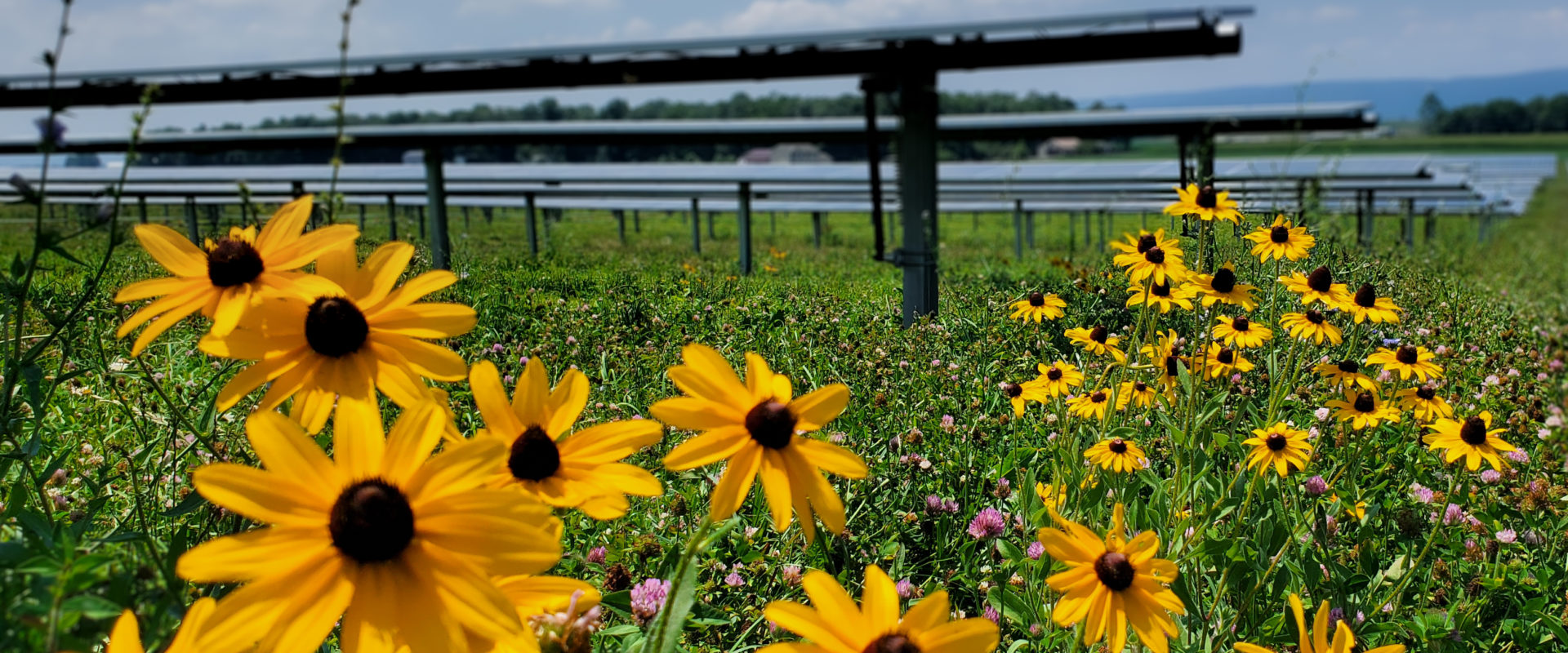Boosting biodiversity with pollinator habitat enhancements at Black Bear Solar
Black Bear Solar was planned and developed with our company’s commitment to incorporating environmental co-benefits in mind: to boost biodiversity through enhanced habitat for pollinator species while generating renewable energy. Through this approach, the 130 MW solar farm in Montgomery County, Alabama will become a dedicated resource for clean energy, ecosystem services and community benefit.
Solar farms lend themselves well to thoughtful land management strategies, including habitat enhancement, which can create gains in biodiversity. At Black Bear, Lightsource bp developed a detailed vegetation plan in partnership with ecologists and wildlife biologists at Conservation Blueprint to create habitat under and around the solar panels for pollinator species like bees and butterflies.
Our vegetation plan includes customized seed mixes of grasses and flowering species so the Black Bear solar farm can serve as a safe, supportive home for pollinator species and other wildlife. These plant species also contribute to other important functions, such as increased stormwater absorption and soil health.
High- and low-density pollinator plantings
Black Bear Solar’s vegetation management plan includes the installation of a high-value wildflower garden outside the array, which will provide an abundant set of floral resources for bees, butterflies, and other native beneficial insects.

Lightsource bp is establishing this high-density pollinator garden on land outside the solar array. this land will now be home to more than two dozen species of pollinator-friendly grasses and flowering plants. The graphic above showcases some of the species featured in the customized seed mix.
Lightsource bp has also established a second vegetation mix to be seeded under and around the rows of solar panels within the array. The diverse species selected will ensure coverage across a range of conditions typically found on a solar site including shady, sunny, wet and dry areas.
The importance of co-located pollinator habitat on solar farms
Pollinators such as butterflies, bees, birds and bats support plant reproduction and reinforce strong resilient ecosystems. Three-fourths of the world’s flowering plants and about 35 percent of the world’s food crops depend on animal pollinators to reproduce, according to the USDA. Some scientists estimate that one out of every three bites of food we eat exists because of pollinators. Habitat loss, climate change, and pesticide use have caused a great decline in pollinator populations.
To help mitigate this loss of pollinators, Lightsource bp is creating and managing vegetation to support pollinator populations at many of our solar farms. Co-located pollinator habitat delivers ecosystem and agricultural benefits on solar farms – yielding benefits for a range of stakeholders, from solar developers to farmers to surrounding communities.
Discover Multiuse Solar
Our Black Bear solar project is an example of our commitment to co-locating responsibly sited solar projects with other land uses in the United States—an approach dubbed “dual-use solar.” Lightsource bp often goes a step further, building multiuse solar projects where clean energy generation shares land with multiple initiatives including agriculture, conservation, and research. Find out more about our multi-use projects.
Related news
03 Apr, 2025
Community hospital check presentation, job fair kick off Lightsource bp Jones City energy center in Jones County, Texas
Community partnerships in Texas
26 Mar, 2025
Lightsource bp solar project in Louisiana goes online, driving US manufacturing and local economic growth
180MW project in Louisiana




